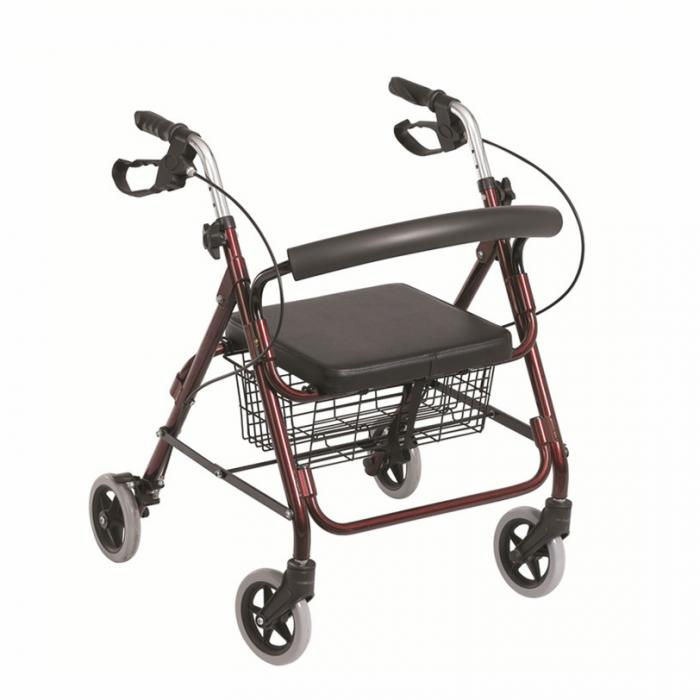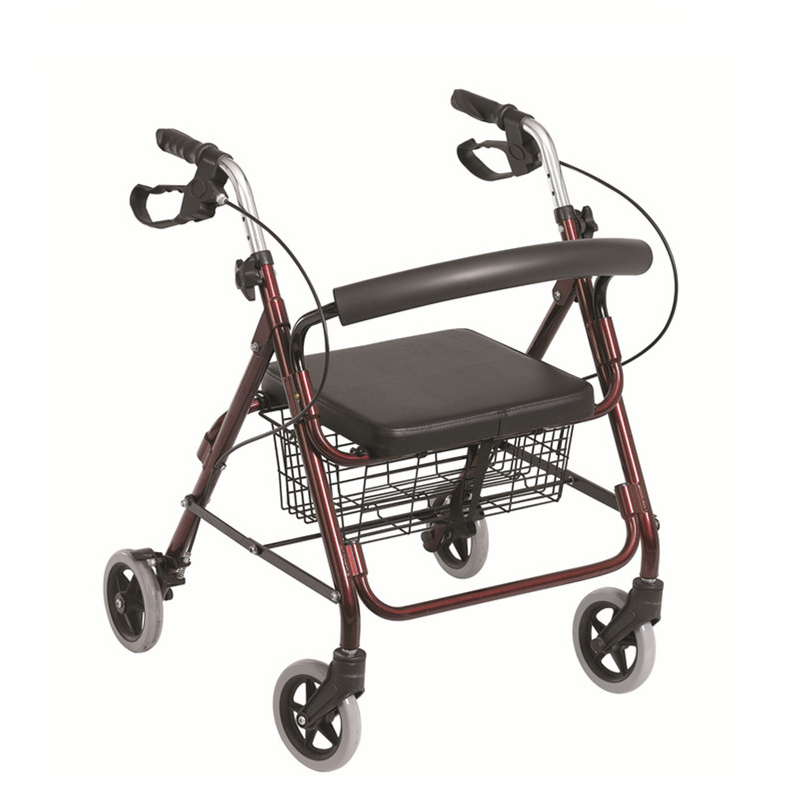Rollator

A rollator, or rolling walker, is a type of wheeled mobility aid with three or four wheels, a sturdy frame, handlebars, hand brakes, and a built-in seat for resting. Unlike standard walkers that require lifting with each step, a rollator rolls smoothly, providing support and stability for individuals who can walk but need help with balance, endurance, or need to rest frequently.
Key features of a rollator:
Wheels: Equipped with wheels on all its legs, allowing for smooth movement without the need to lift the device.
Handbrakes: A handlebar brake system allows the user to slow down and lock the wheels for stability.
Seat: A built-in seat provides a place to rest when tired, though it is not designed for prolonged sitting or being pushed like a wheelchair.
Storage: Many rollators include a basket or bag for carrying personal items like groceries or an oxygen tank.
Types: They are available in both 3-wheel and 4-wheel models, with 4-wheel versions offering more stability.
Portability: Rollators are designed to be foldable for easier transport and storage.
Who can benefit from a rollator:
Rollators are suitable for individuals who:
Experience declining mobility or balance issues.
Need help with endurance to walk longer distances.
Are recovering from surgery or injury.
Have chronic conditions like arthritis or multiple sclerosis.
Simply need a little extra stability and the ability to take a break when needed.

A rollator aids walking by providing stability and mobility with its four-wheeled design, handbrakes, and built-in seat, requiring less effort than a standard walker. It supports individuals with balance issues, reduced endurance, and joint pain, allowing them to walk longer distances more comfortably.
How a rollator improves walking
Reduces fatigue: Unlike traditional walkers that must be lifted with every step, a rollator's wheels allow it to glide smoothly forward. This conserves the user's energy and makes it easier to walk for longer periods.
Increases stability: The four-wheeled frame and ergonomic handles offer continuous support for your arms and upper body. This helps you maintain balance and reduces the risk of falls, especially on uneven outdoor terrain.
Enhances natural gait: A rollator allows for a smoother, more normal walking pattern and pace, which studies show can improve walking performance over distance and time.
Protects joints: Biomechanical studies indicate that walking with a rollator can significantly reduce the load on the knee and ankle joints by transferring some of the work to the hip extensors. This is especially beneficial for individuals with arthritis or joint weakness.
Provides mobility for varied terrain: Larger, more robust wheels on rollators are designed to handle outdoor surfaces like grass, concrete, and uneven paths better than smaller, indoor-focused wheels.
Key features that support walking
Hand-operated brakes: The braking system provides control over speed and allows you to stop safely, especially when navigating slopes or slippery areas.
Built-in seat: Many rollators include a seat with a backrest, giving you a place to rest whenever you get tired. This helps you maintain your activity level without overexerting yourself.
Height-adjustable handles: The height of the handlebars can be customized to ensure your arms are in a comfortable and ergonomic position. This promotes proper posture and reduces strain on your back and shoulders.
Storage options: Convenient baskets, pouches, or bags allow you to carry personal items, freeing your hands to focus on steering and balance.